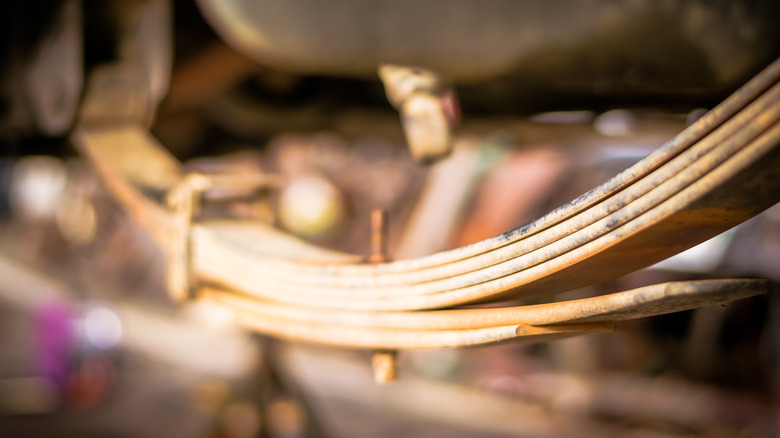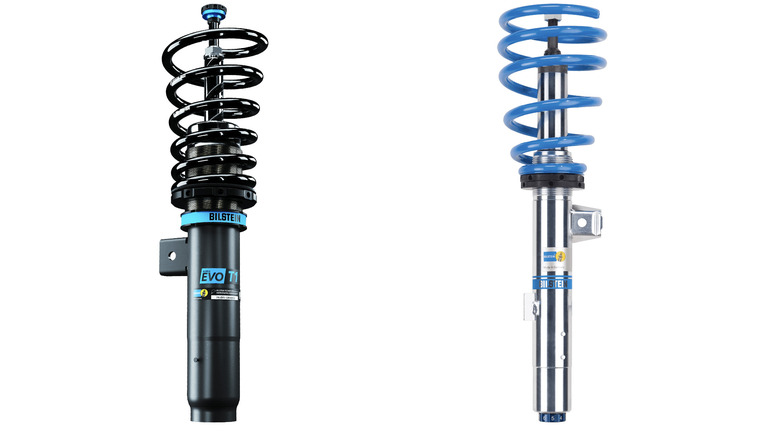Leaf Spring Vs. Coilover Suspension: What's The Difference?
Automotive design has come a long way since Karl Benz designed the Patent Motorwagen in the late 1800s, and Henry Ford brought the T-4 powered Model T to the masses in 1908. Those early cars were little more than motorized adaptations of the horse-drawn carriage, but we now have cars with sophisticated electronics that have us closing in on the point where they may become fully autonomous.
The interim steps have seen innovations in fuel delivery, engine efficiency, and the mechanisms that allow us to drive over bumpy surfaces without loosening our dental work. This part of a vehicle is called the "suspension" since it connects the chassis to the axles, while maintaining a distance from the ground that's appropriate enough for comfortable and safe driving. Along with smoothing out bumps, your car's suspension helps keep the wheels firmly on the road over uneven terrain.
Older cars specifically most often had leaf spring suspensions. In this configuration, the axles are connected to the frame via curved springs made up of layers of metal — or "leafs" — which are bolted together or banded with metal straps and mounted using U-bolts and nuts. Leaf springs are attached at fixed points on the frame, and need separate shock absorbers to dampen road vibration and control spring oscillation. They will sag over time and under load and eventually require replacement.
Coilovers combine shocks and springs
A coilover has a shock absorber topped with a coil spring, collar, and bump stop, and combines the functions of a leaf spring and shocks. Most cars come from the factory with separate shocks and coil springs, but it's usually easier to replace these components with a single coilover unit when they become worn.
Many aftermarket coilovers are easily adjustable for ride height and dampening level, whereas leaf springs need to be changed completely to lift or lower a vehicle, or alter the spring rate. Leaf springs are simpler in design and don't require geometric adjustments when they're changed unless you're making a drastic adjustment in ride height.
If you've read our primer on the difference between shocks and struts, you might now be wondering if a strut and coilover are the same thing. Both devices combine a coil spring and shock absorber, but coilovers allow you to choose a higher, lower, stiffer, or softer ride than original equipment struts. Coilovers and struts also perform the leaf spring's job of supporting the vehicle's weight.
Installing coilovers can change the geometry of your car's suspension and usually requires an alignment be done afterwards, particularly if height adjustments are made. Leaf spring and shock upgrades or swaps should only change the distance between the axles and frame, and shouldn't require an alignment if done properly.

